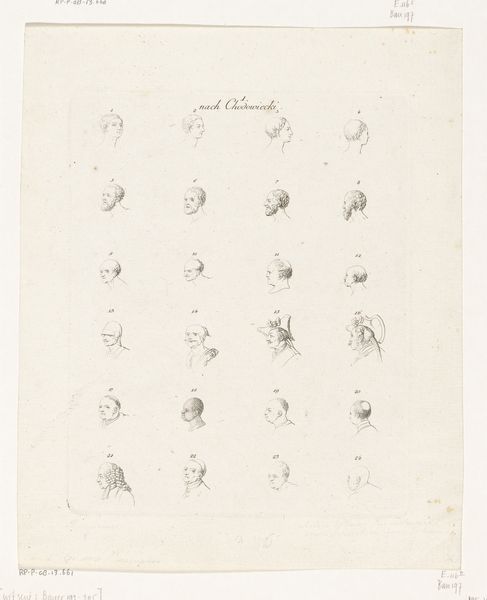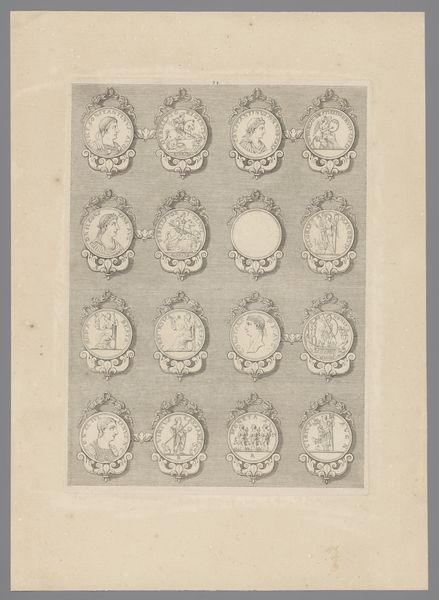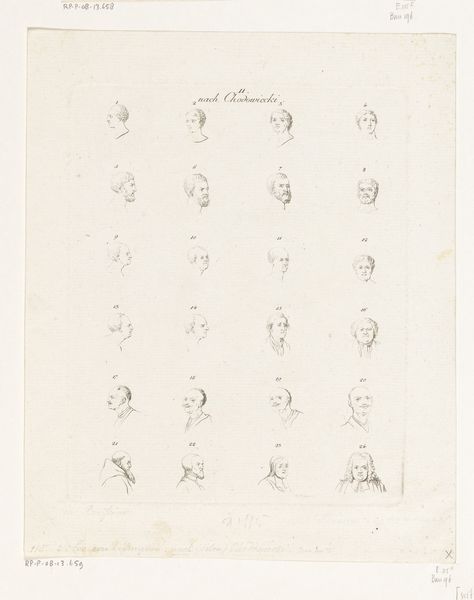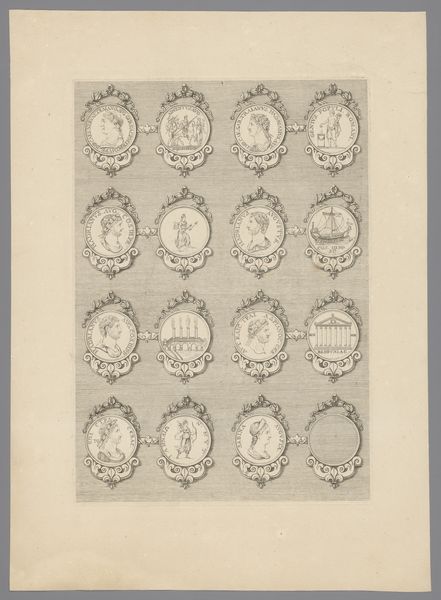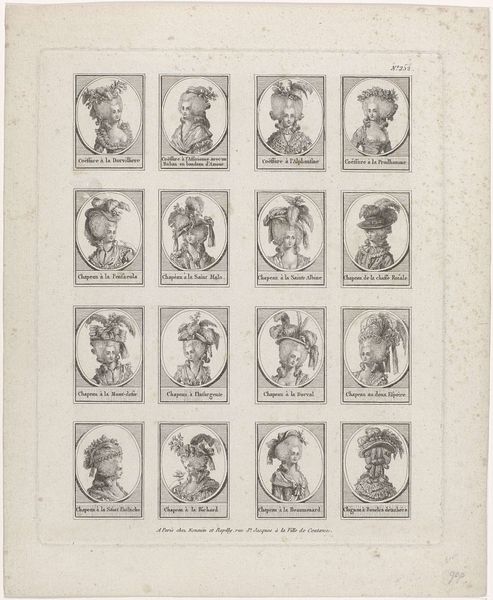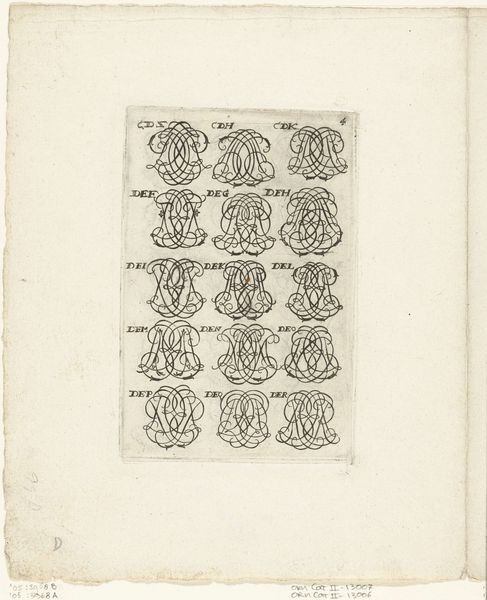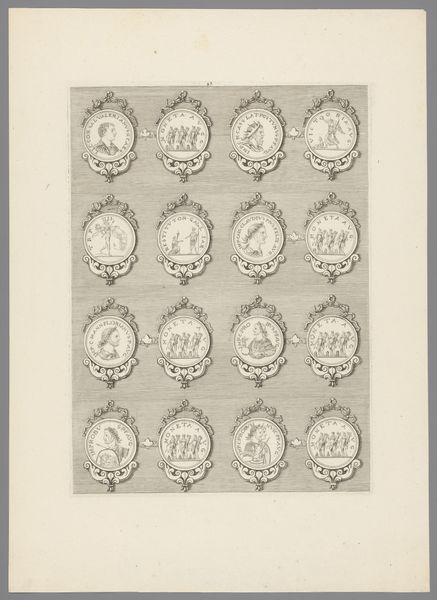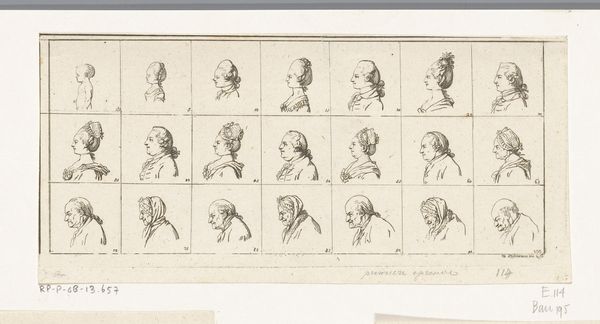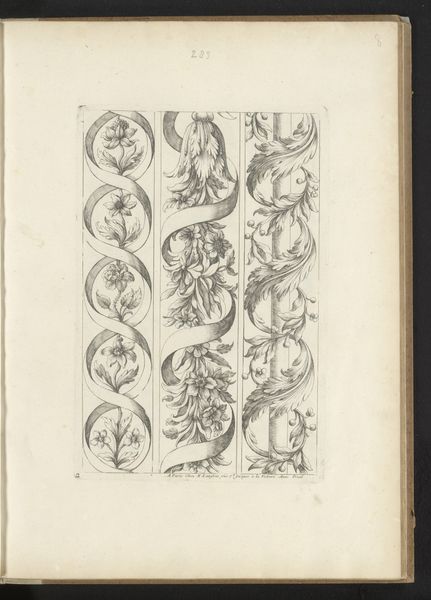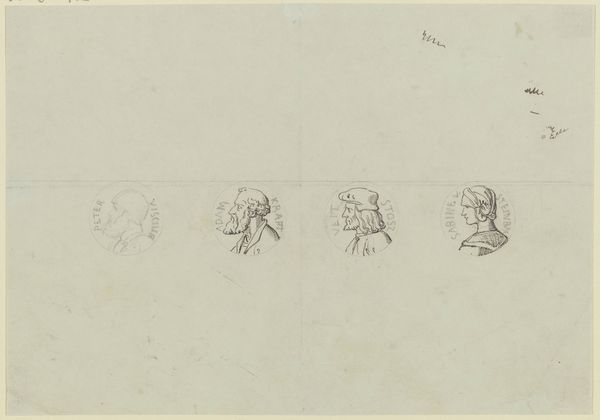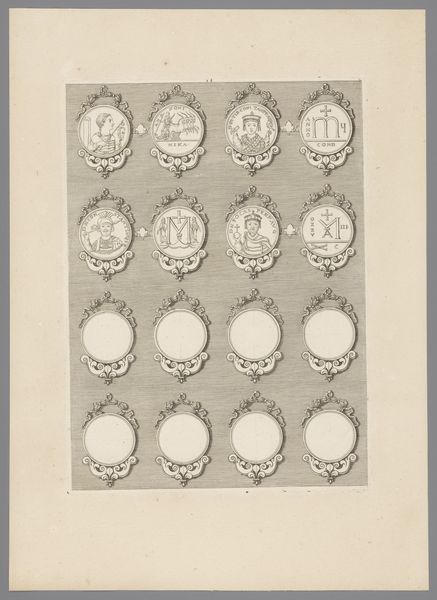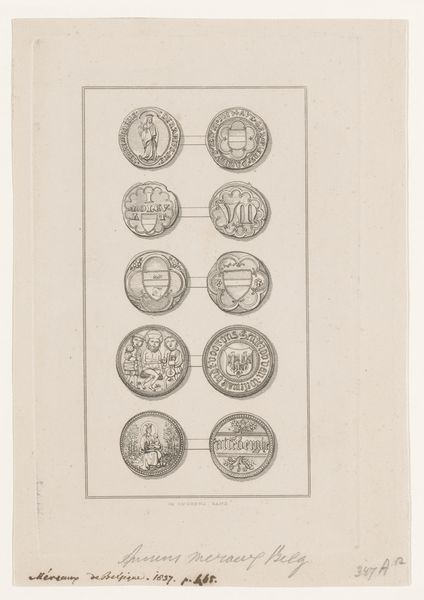
drawing, print, paper, engraving
#
portrait
#
drawing
# print
#
old engraving style
#
figuration
#
paper
#
line
#
history-painting
#
academic-art
#
engraving
Dimensions: height 137 mm, width 109 mm
Copyright: Rijks Museum: Open Domain
Daniel Nikolaus Chodowiecki made this print of thirty physiognomic heads, sometime in the late eighteenth century. The pseudoscience of physiognomy, popular at the time, purported to reveal a person's character based on their facial features. Consider how the image creates meaning through visual codes and cultural references. Chodowiecki made the print in Germany, where there was rising interest in the Enlightenment ideals of reason, observation, and classification. This print reflects those values, presenting a neatly organized grid of faces for our objective analysis. But, notice how the artist subtly plays with the supposed scientific accuracy of physiognomy. The faces are not neutral; they express a range of emotions and social types. Are we really reading character, or are we just projecting our own prejudices? As historians, we need to consult period sources to better understand the social context and reception of this image. What did Chodowiecki intend to communicate? And how did viewers use this print to reinforce or challenge the social norms of their time? After all, the meaning of art is contingent on social and institutional context.
Comments
No comments
Be the first to comment and join the conversation on the ultimate creative platform.
